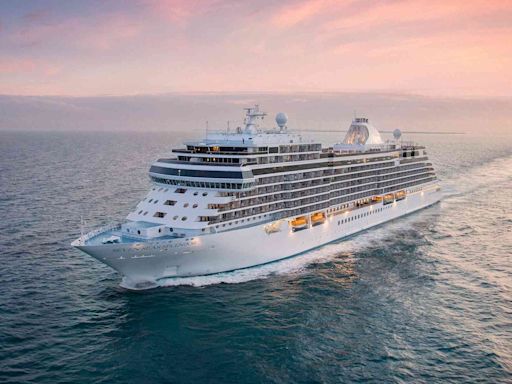Great Barrier Reef Tours & Tickets are Selling Out Fast. Book Now to Avoid Disappointment. 5-Star Rated Great Barrier Reef Tickets, Trips and Activities! Book Top Tours on Viator
Search results
Score Nearly Half-off a Regent Seven Seas Cruise Next Year — What to Know
“This exclusive offer for guests in the U.S. and Canada presents an exceptional opportunity to explore lesser known yet breathtaking locales, from the serene landscapes of the Great ...
Travel+Leisure via Yahoo
1 day ago
A US airport made a ‘confusing’ name change. Here’s how it’s going
Words fly between airports over identity theft claims, a new Instagram trend is delivered on a tray, and one couple shows how to relocate to another country - twice.
CNN via Yahoo
1 day ago
Learn about the world's largest coral reef system, its biodiversity, threats, history and culture. Find out how to visit, explore and protect this natural wonder of the world.
Oct 19, 2023 · Learn about the biodiversity, threats, and conservation of the Great Barrier Reef, a coral reef off the coast of Australia. Find out how climate change, pollution, and pests affect the reef and what you can do to help.
23 hours ago · Learn how to visit, explore and protect the Great Barrier Reef, one of the world's natural wonders. Find out the best time, places, tours, activities and accommodation for your reef holiday.
Explore the world's largest coral reef and its diverse marine life, islands and beaches. Find out about the best places to stay, visit and experience the reef, from Cairns to Townsville.
- Overview
- Geography
- GeneratedCaptionsTabForHeroSec
Great Barrier Reef, complex of coral reefs, shoals, and islets in the Pacific Ocean off the northeastern coast of Australia that is the longest and largest reef complex in the world. The Great Barrier Reef extends in roughly a northwest-southeast direction for more than 1,250 miles (2,000 km), at an offshore distance ranging from 10 to 100 miles (1...
The reef actually consists of some 2,100 individual reefs and some 800 fringing reefs (formed around islands or bordering coastlines). Many are dry or barely awash at low tide; some have islands of coral sand, or cays; and others fringe high islands or the mainland coast. In spite of this variety, the reefs share a common origin: each has been formed, over millions of years, from the skeletons and skeletal waste of a mass of living marine organisms. The “bricks” in the reef framework are formed by the calcareous remains of the tiny creatures known as coral polyps and hydrocorals, while the “cement” that binds these remains together is formed in large part by coralline algae and bryozoans. The interstices of this framework have been filled in by vast quantities of skeletal waste produced by the pounding of the waves and the depredations of boring organisms.
European exploration of the reef began in 1770, when the British explorer Capt. James Cook ran his ship aground on it. The work of charting channels and passages through the maze of reefs, begun by Cook, continued during the 19th century. The Great Barrier Reef Expedition of 1928–29 contributed important knowledge about coral physiology and the ecology of coral reefs. A modern laboratory on Heron Island continues scientific investigations, and several studies have been undertaken in other areas.
The reef has risen on the shallow shelf fringing the Australian continent, in warm waters that have enabled the corals to flourish (they cannot exist where average temperatures fall below 70 °F [21 °C]). Borings have established that reefs were growing on the continental shelf as early as the Miocene Epoch (23.0 million to 5.3 million years ago). Subsidence of the continental shelf has proceeded, with some reversals, since the early Miocene.
Britannica Quiz
Wonders of the World Quiz
The water environment of the Great Barrier Reef is formed by the surface water layer of the southwestern Pacific Ocean. The reef waters show little seasonal variation: surface-water temperature is high, ranging from 70 to 100 °F (21 to 38 °C). The waters are generally crystal-clear, with submarine features clearly visible at depths of 100 feet (30 metres).
Learn about the world's largest coral reef complex, its formation, biodiversity, and challenges from climate change. Explore maps, videos, and facts from Britannica's editors and experts.
- The Editors of Encyclopaedia Britannica
Learn about the Great Barrier Reef, one of the world's natural wonders and a UNESCO World Heritage Area. Discover its amazing biodiversity, cultural significance, and the challenges it faces from climate change, pollution and human interference.
Jun 20, 2018 · Learn about the largest coral reef system in the world, its diverse marine life, and how to explore it. Find out how to get there, when to go, and what to do on this World Heritage site.


